Cyclingnews Verdict
The Garmin Edge 1040 Solar is the most advanced bike computer available for purchase. It can go weeks without charging and help you get your best time no matter how long the event. The only question to ask is if you actually need the features.
Pros
- +
Solar charging adds meaningful battery life to a ride
- +
Garmin finally gets phone based configuration of data fields
- +
USB-C Charging
- +
Metal mounting interface
- +
Multi-band GNSS means more accurate tracking
- +
Battery life up to 45 hours in normal use
Cons
- -
Solar display is slightly darker than non-solar
- -
Software features stay attached to specific hardware only
You can trust Cyclingnews
If you want to be a better cyclist one of the best purchases you can make is picking up a new cycling computer. That statement is true whether you define 'better' as being able to ride faster, being able to ride farther, or even being able to ride exactly where you want. Whatever it looks like for you, today's best cycling computers will help you achieve your goals.
What a good cycling computer amounts to is a much bigger topic though. There are relatively affordable units like the Garmin Edge 130 Plus that might be more than enough for your riding. On the other end of the spectrum is the most advanced, and expensive, cycling computer available today, the Garmin Edge 1040 Solar.
There's no need to tease the basic assessment of this review, there is no other cycling computer that's more advanced. There's also no other cycling computer that's as expensive and no other brand that even attempts to compete at this level. Without needing to evaluate where the Garmin Edge 1040 Solar falls in the greater cycling computer ecosystem, we've spent time to work out what it offers, and whether that's something our readers are likely to need, whether they are buying this as their first cycling computer ever, or they're upgrading from the previous range-topping Edge 1030 Plus.
If you are considering upgrading to Garmin's latest cycling computer, keep reading to see if the Garmin Edge 1040 Solar is the right choice for you.
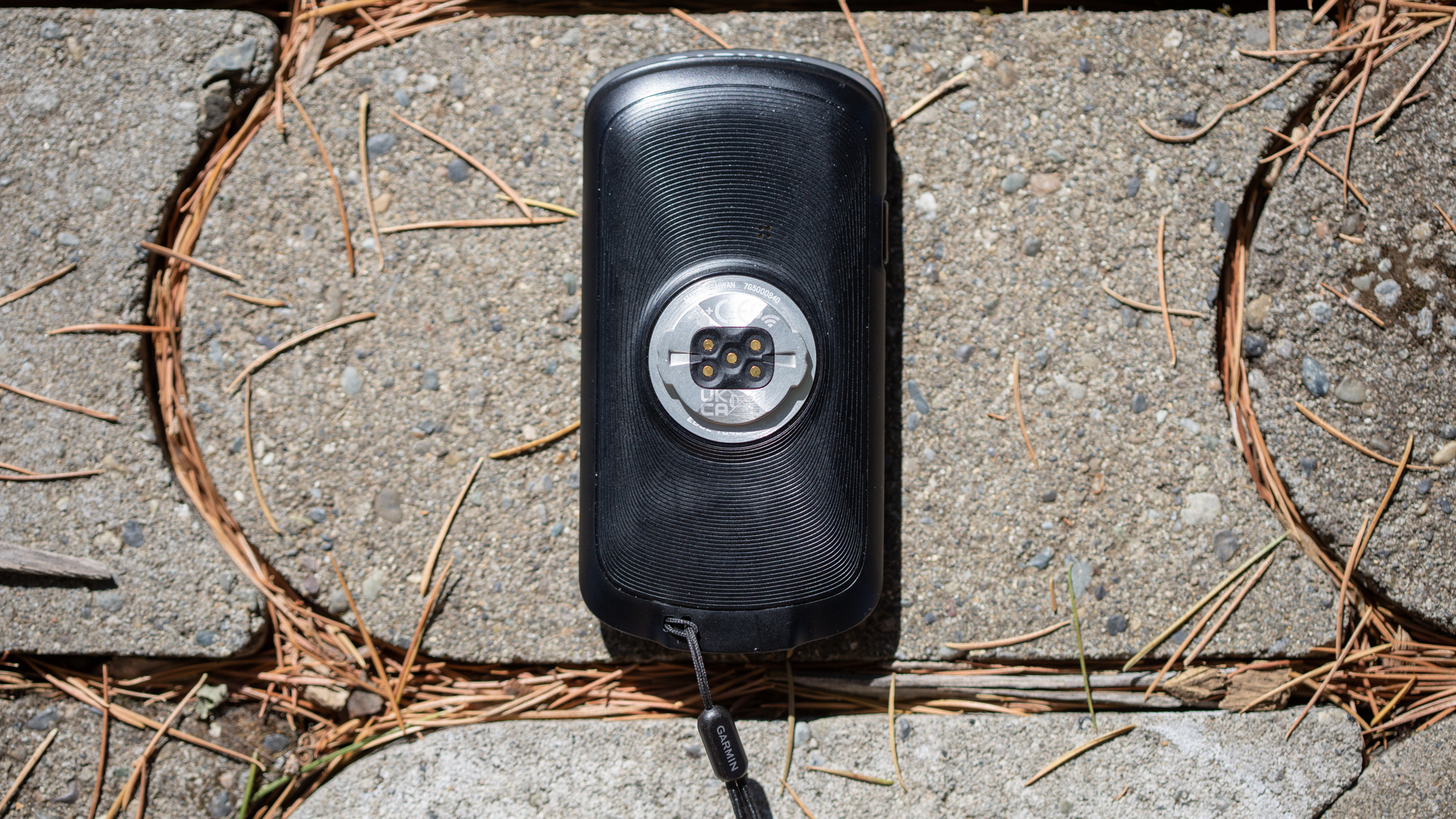
Design and aesthetics
The Garmin Edge 1040 Solar boasts the joint-largest colour touchscreen in the Garmin performance cycling lineup. The screen size and resolution remain unchanged from the previous Garmin 1030 Plus and stand at 3.5in and 700x282px. There are three physical buttons for power, start/stop the ride, and lap start/stop but aside from those functions the interface is entirely touch-based. This is all very similar to both the Edge 830 and the Edge 1030 Plus but those units are not the same.
This distinction is important to understand because unlike competing products, Garmin cycling computers have different features across the lineup. Even beyond hardware-based limitations, Garmin has opted not to introduce software advancements into older models. This is an inherently different strategy from Wahoo, Hammerhead, and even Stages. You'll want to keep this in mind as you read through the review. If you like the sound of something, picking up an Edge 1030 Plus, or Edge 830, may not get you those features even though the design and aesthetics of those units are largely the same.
The obvious place the design differs from those of similar units is in the run time. Compared to the Edge 830 this makes logical sense because of the size. As the larger units, the 1000 series of Garmin devices get larger batteries and longer run times. The Edge 830 has an expected run time of 20 hours in standard use and up to 40 hours in battery saver mode. The more interesting comparison is with the previous generation 1030 Plus.
Compared to the 1030 Plus, the 1040 series has actually had the battery size reduced slightly. The previous model had a 1900 mAh battery while the 1040 series, of which there is both a solar and non-solar version, uses an 1800 mAh battery. Despite the smaller battery you can expect battery life of 35 hours of standard use for the non-solar version and 45, or as much as 180 hours in the most extreme power saving mode, for the Edge 1040 Solar. Getting those max numbers for the 1040 Solar does require full sun for the solar panel to be able to provide its claimed up to 42 minutes per hour extra. In layman's terms, that means that in full sunshine, the solar power can charge the battery 70% as quickly as it will deplete when run in battery saver mode.
Tasked with harvesting the sun on the Edge 1040 Solar are the obvious, and non-obvious, Solar panels that are some of the most distinct outward design details. The front panel of the unit is mostly non-descript black and a screen so it doesn't take much to steal the show. Above and below the screen are two small solar panels that look like you'd expect solar panels to look. Having actual panels on a cycling computer is unique and anytime someone checks out the 1040 Solar they draw the eye.

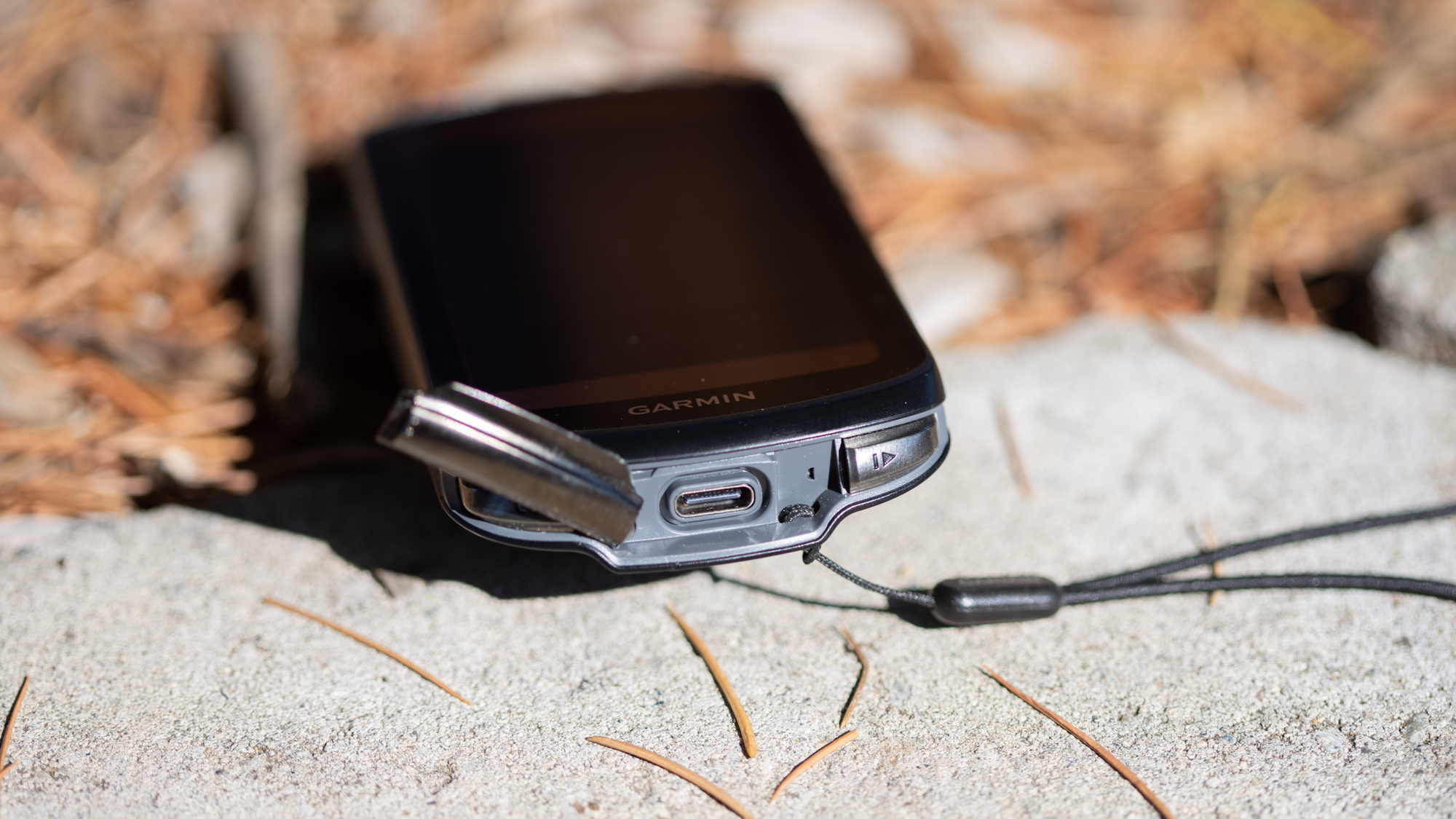
What you don't see is that the whole front glass is also a lower efficiency solar panel. The two together are responsible for the extra power and they work when the unit is off. If you've got a sunny window you could conceivably avoid taking advantage of the USB-C charging altogether. The USB-C connection supports fast charging though and five minutes of charge will add an hour of ride time with only two hours required to take the unit from empty to full. The 1040 series also continues to be compatible with the Garmin Charge battery pack and the 3100 mAh of additional waterproof charging capabilities that it offers.
Getting more battery life from a smaller battery isn't entirely down to the solar capabilities. Like the screen, the processor hasn't changed in the 1040 series compared to the 1030 Plus. Instead, there have been software refinements. One side of that equation is new software architecture and better optimization of the existing hardware. This is the behind-the-scenes piece but there have also been simpler optimizations such as route calculations that happen sooner. This is the more visible piece and both combine for better battery performance and a snappier overall experience.
For those keeping track, the screen is the same, the processor is the same, and the size of the 1040 Solar is nearly identical to the 1030 Plus, but flip the 1040 Solar over and you will see more obvious physical changes. The Garmin quarter turn mount hasn't changed but it's no longer plastic. Instead of the plastic, you'll now find a single, seamless piece of aluminium formed into the quarter turn mount. Surrounding the mount is a new design as well in the form of a stepped plastic that vaguely resembles the steps of a 3D printed piece.
The base panel is a bit different as well. The two physical buttons at the bottom remain but the battery door and lanyard have gone through an update. The finish of the buttons, a painted bronze colour, has now spread to the battery door which has grown in size. The IPX7 water resistance rating has not changed and the safety lanyard has moved just a bit but remains functionally the same.
The last big hardware design update is the move from a GPS/GLONASS/Galileo/BeiDou based satellite positioning system to multi-band satellite positioning. The Edge 830/530, Edge 1030 Plus, and just about every cycling computer with true navigation abilities will connect to global satellite systems and track their positions. There is more than one satellite constellation accessible but the connection happens through a single set of frequencies. A multi-band system uses the same satellite constellations but is able to utilise a greater set of frequency options for a more stable connection. More stability means better accuracy, which I never particularly had an issue with, but I did notice an advantage in how quickly it can pick up its initial connection.

Software updates
Profiles continue to represent a collection of sensors and displays for different situations. This is useful for presenting the information you need to see in the way you need to see it when changing bikes and locations. For example, a mountain bike, a road bike, and an indoor ride can all have a setup that is different and ready to go. With the Edge 1040 series, you can now finally use your smartphone to make changes to these details.
Aside from this small change, there are also a number of surface level changes: little differences in the way the home screen looks and how after-ride summaries display. For the most part, these details represent a rearranging of the same information but particularly in the case of the home screen, it is more accessible and obvious.
There are more substantial changes though. Greater smartphone connectivity is a catchup feature and better data visualisation is nice but what's new is Garmin leaning further into training features. The 1030 Plus featured on-device training features already but the 1040 series takes it even further. The widget-based home screen is largely a visual makeover that helps make it even easier to see if Garmin thinks you are overtraining. It is more convenient though. It’s like a shortcut taking you to details about exactly why Garmin thinks what it does.
Dive into that shortcut and you’ll start to find some new features. The training status screens show a long list of details about your training. Keep clicking through and you'll get to a cycling ability screen. In some ways the data presented is the same as the load focus screen. That makes sense given that the four-week load focus dictates what your strengths are. However, this screen has one additional piece of info which is that it names your strength. This is the first truly new piece and for me, it says "Endurance Specialist" and gives a small bit of info about what that means. More importantly, there's a "View Analysis" button.
Clicking that takes you to another screen that breaks down the meaning of the three performance metrics from the previous screen. Up until now, the info presented is interesting but at the bottom of this screen is a button that says "View Course" and this is where you get a real glimpse of where Garmin is moving. Select one of your courses and there's yet another button that says “course demands”. It's a way of comparing your strengths to the demands of a course and identifying training changes you may need to make.
The other, bigger, pieces of extended training strategy are real-time stamina and the ability to create a power guide. In essence these are both two sides of the same coin - both are ways of pacing during a ride - but the power guide is more relevant to solo efforts while stamina is better suited to racing. The stamina screen is a real-time view of the effort you are doing vs your ability to sustain it. For example, if you are racing someone up a hill, you can watch your stamina turn red and start to decrease. This is very similar to Xert and the MPA measurement it offers. Power pacing takes that same information and uses it to break a ride into a series of chunks based on the difficulty you select. This is perfect for a time trial or triathlon.
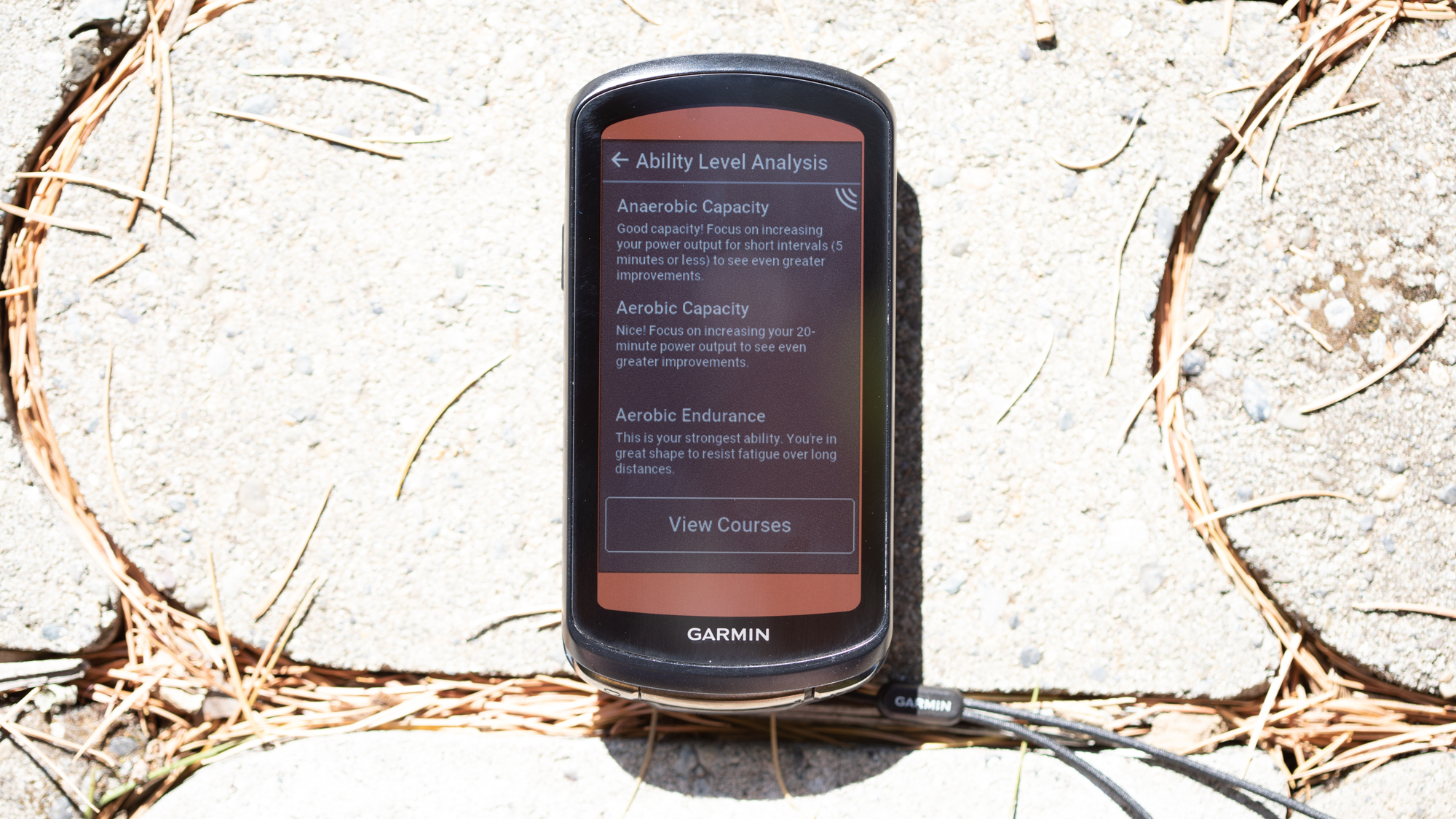
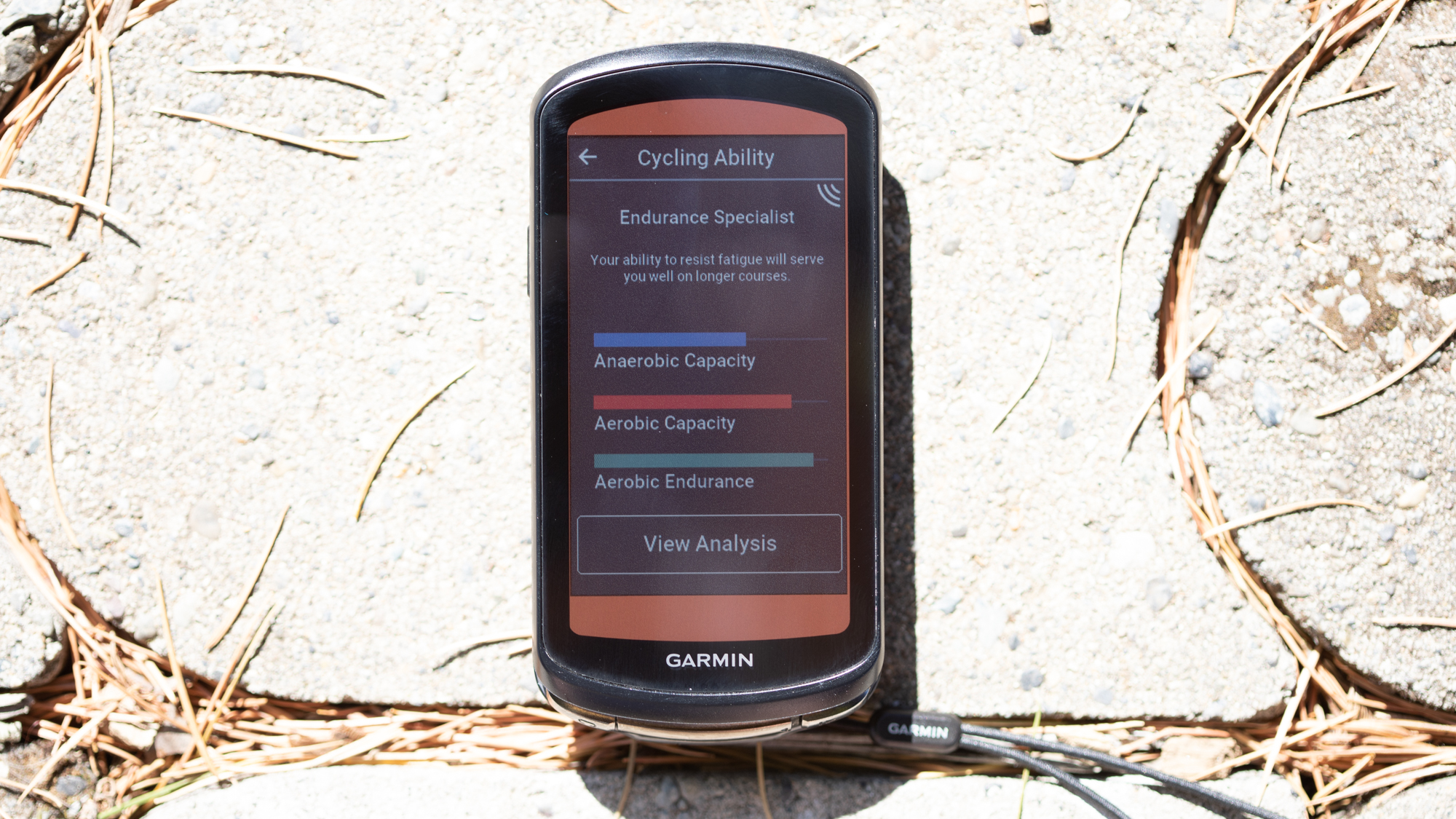
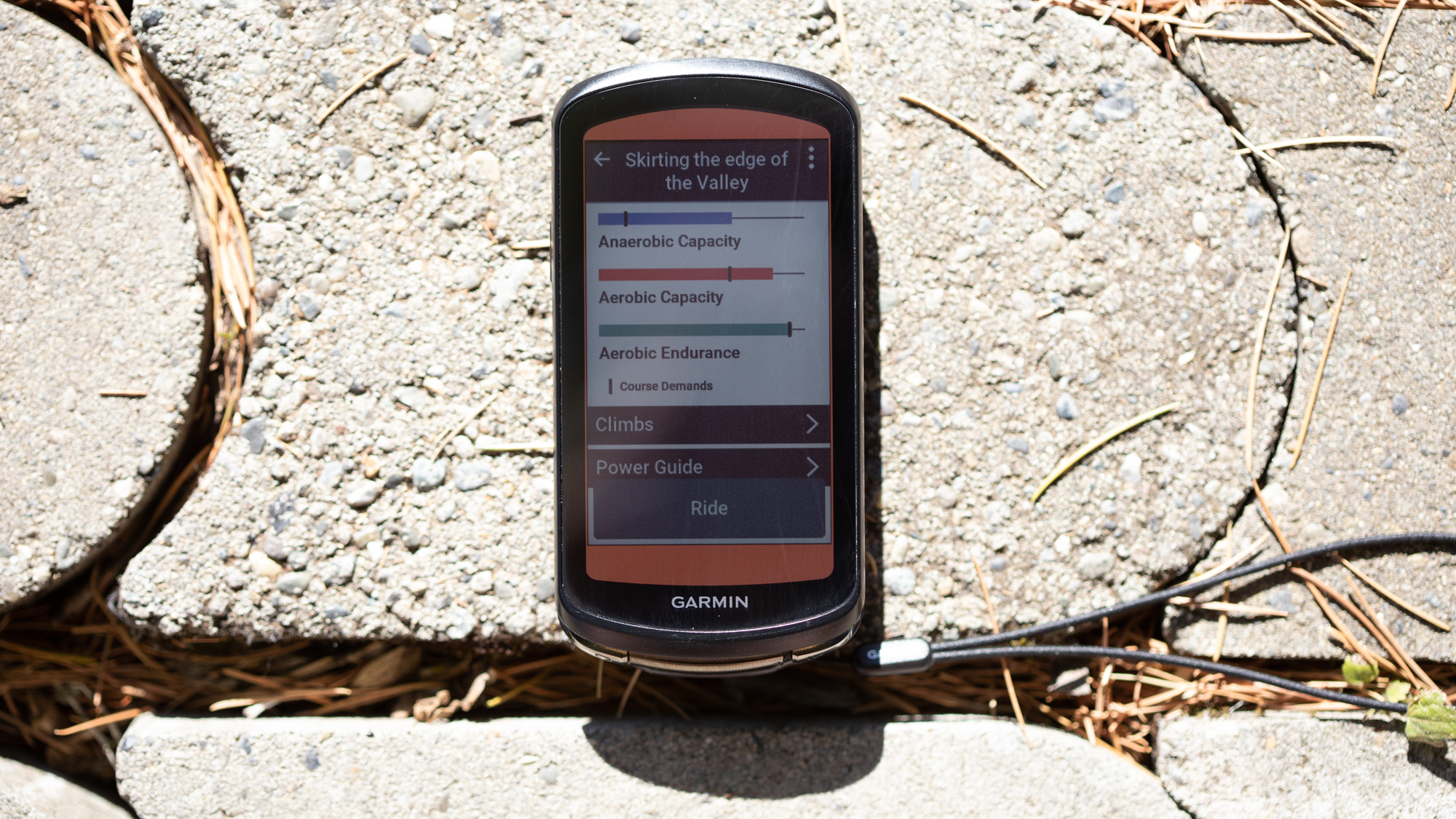

Performance
One of my favourite features about the Garmin 1040 Solar is not new to this unit and not even specific to Garmin. I'm starting here because it's simple, but the tracking feature is better than the competition. Every time I leave the house on my bike, Garmin sends an email to my wife with a tracking link. She can click on that link and see exactly where I am, how fast I am moving, and if I am following a course she can see where I am going. If I want, I can open Garmin connect and grab the link to send to a friend. The friend can see the data coming off my power meter and heart rate monitor and see that despite the fact that I'm late, I'm moving toward the meeting spot and riding hard to get there. Wahoo offers a similar feature but the Wahoo tracking isn't presented as well. Hammerhead and Stages don't offer the feature at all.
That's not a 1040 Solar feature but it's a simple reason that I prefer Garmin computers in general. Getting a little more specific, my preference to the 1000 series of computers, and the Edge 1040 Solar in particular, is about battery life. Hammerhead offers such low battery life that a 100-mile winter ride, always slower in constant rain, will start to get uncomfortably close to being too long for the battery.
Like the Garmin 1040 Solar, Hammerhead offers USB-C fast charging but that's of little help on those same winter rides in constant rain. Wahoo does have enough power for almost all rides without needing to charge but there are still rides that call for more.
Garmin takes it even a step farther with the Charge power pack. The Edge 530, Edge 830, and Edge 1030 Plus all have the option of using the Garmin Charge power pack and that means waterproof charging while in use. Paired with a 1030 Plus, you can get through a weekend of bikepacking, or an ultra-race, without needing to charge your head unit. The challenge with that is that more and more bikes have no ability to use the required Garmin out front mount, but the Edge 1040 Solar changes the equation. There's enough power, at least in sunny conditions, to very nearly matching the 1030 Plus and the Charge power pack without any add-on power. You can also still use the Charge power pack if you need to.
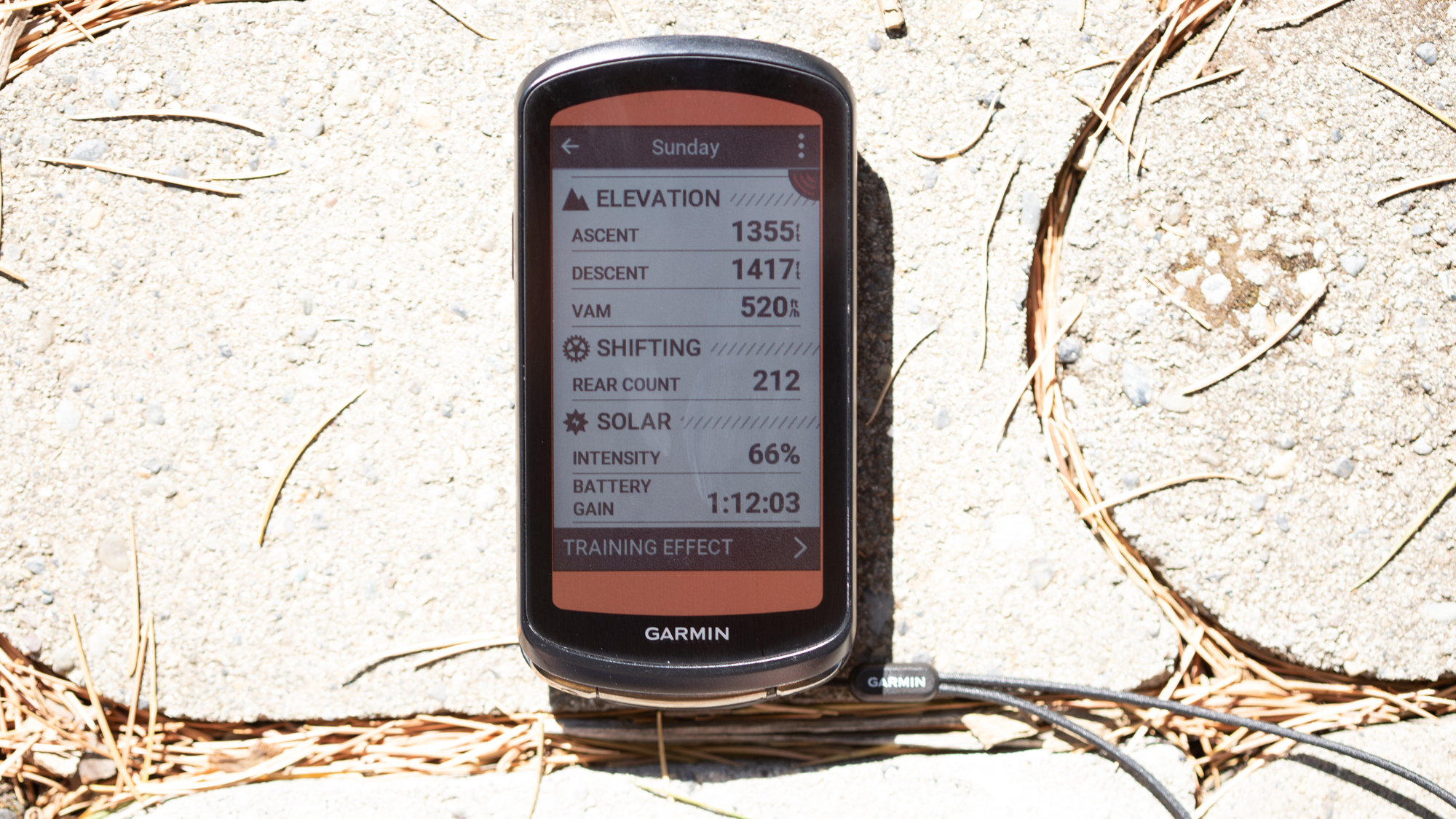
To be fair, even those of us that occasionally like to test the limits of battery life on cycling head units won't have that need all the time. In that case, how about multiple 200-mile weeks without having to plug in your head unit? Then, when it's time to finally charge you'll be able to get enough power for an all-day ride in under an hour. It really changes the way you do things. However, it does come with two downsides. Price is the obvious one but the screen is ever so slightly darker than the 1030 Plus. It's pretty subtle but it is there.
As discussed, the training software is the other big change that comes with the Edge 1040 Solar update. The details about what kind of rider you are and how that relates to a specific course are unlikely to be all that useful. If you ride enough that you are considering spending this much on a bike computer, it's likely you also understand your training enough to know what you are good at and how that relates to a specific course without a computer telling you. You may even already use Strava, TrainingPeaks, Xert, BestBikeSplit or one of the many other training apps telling you such information anyway. Consider the details about your strengths as a nice extra if you decide it's worth buying the unit for other reasons.
The more useful feature to me is the power pacing. If I did more shoulder-to-shoulder racing, I could see the usefulness of real-time stamina as well but for me, power pacing is a perfect match. Riding alone for long distances and staying focused is a challenge and the power pacing feature solves that. You can work it out in Garmin Connect or directly on the 1040 Solar but the process is the same. Select a weight, a riding position, and a type of terrain, and you'll have the option to adjust the difficulty as a percentage of your FTP (functional threshold power). During the ride, you'll get a granular breakdown of what power you need to be at. As long as you've got a power meter, it's an impressive feature for the solo rider and you can only get it on a 1040 series Garmin.
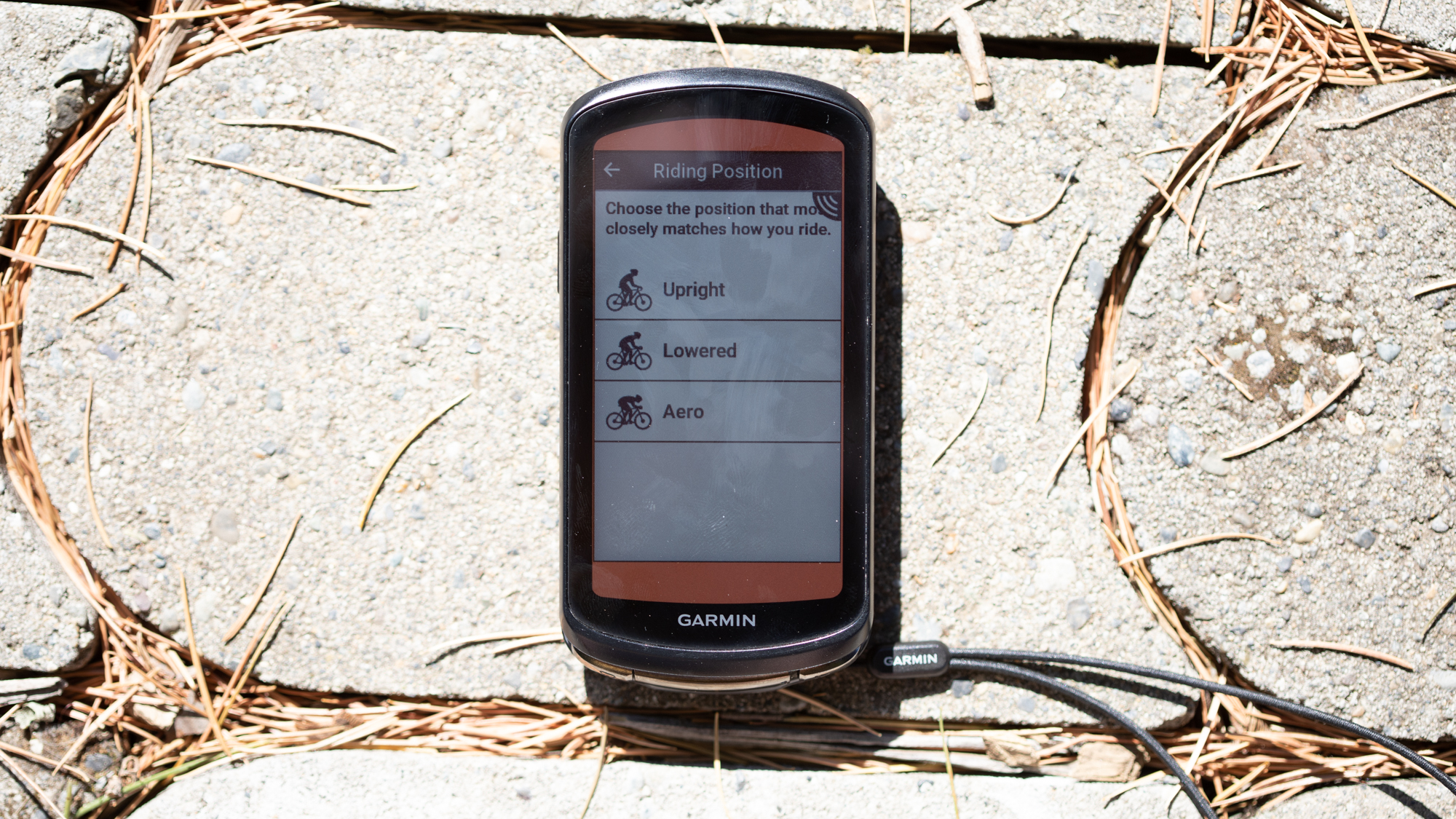

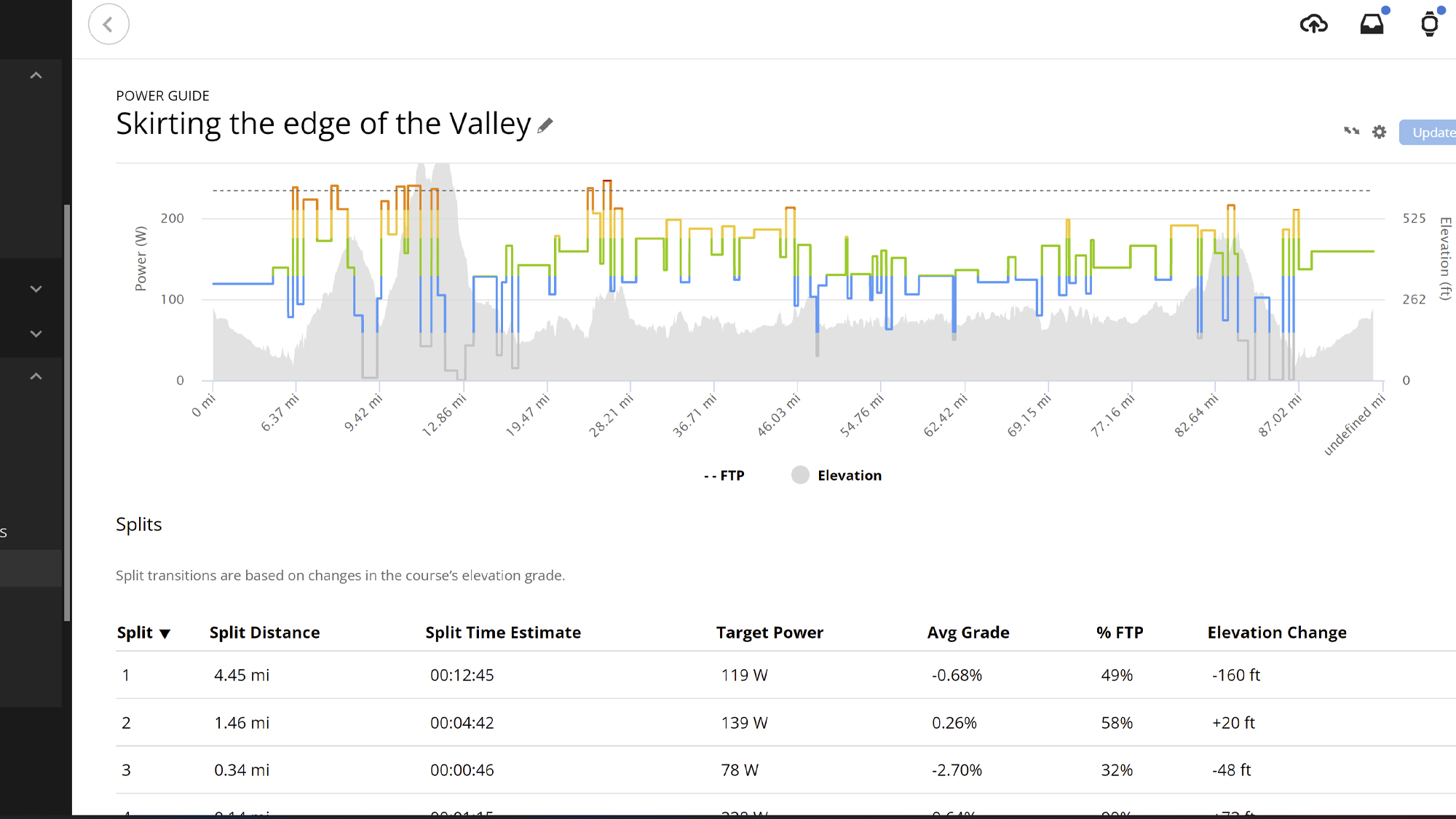
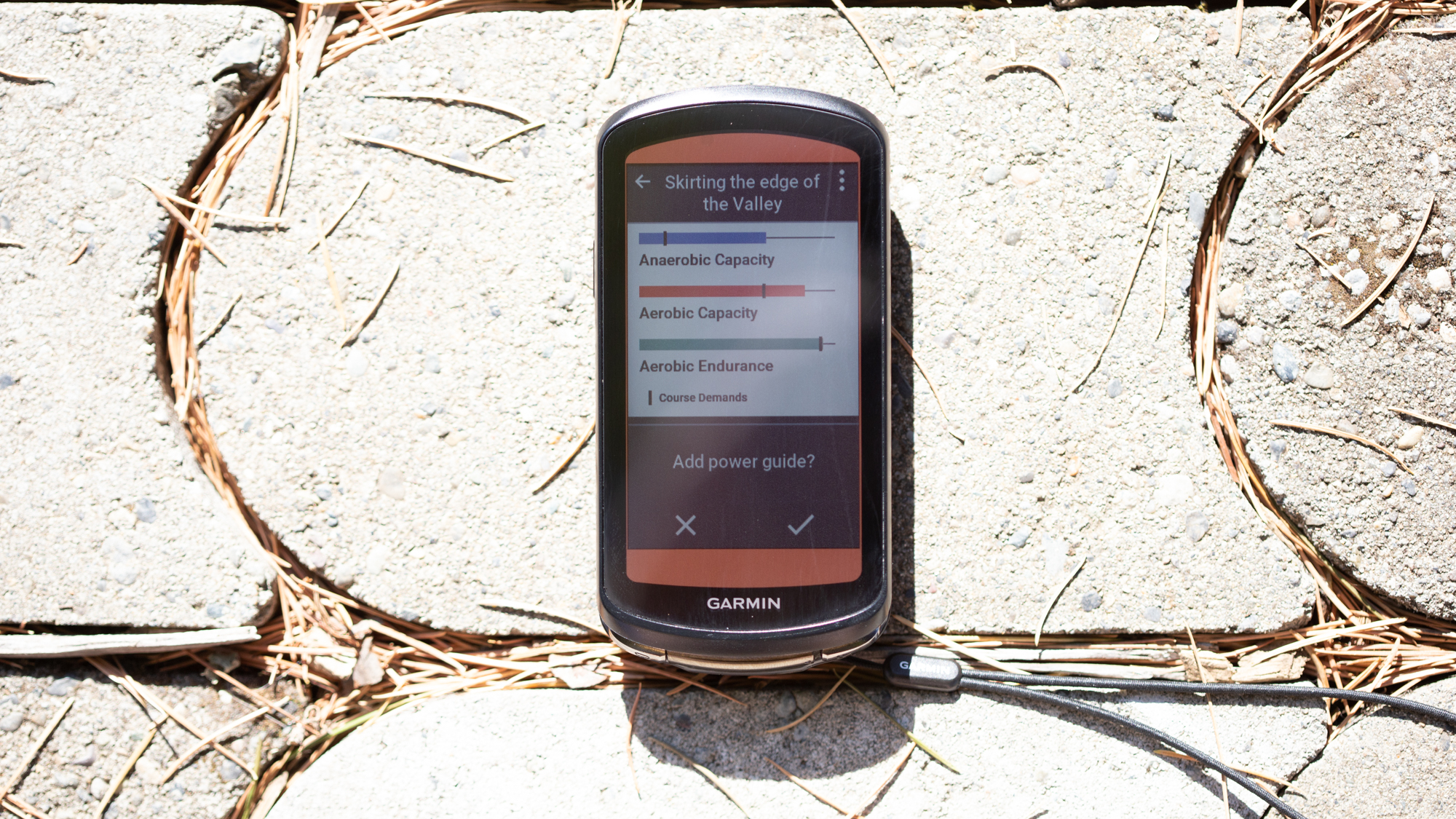

The expected features
Given how feature rich modern cycling computers are it's hard to realistically cover everything. The focus has to be on what's new and unique but that doesn't mean there aren't a host of features to match, or rival, other feature-rich cycling computers. Some variations of these features are things you'll find on the Wahoo Elemnt Roam and Bolt, Hammerhead Karoo 2, and other Garmin models.
Navigation: Garmin already has some of the best navigation capabilities on the market. You can create "courses" via Strava, Ride With GPS, or directly in Garmin Connect then send those courses to the Edge 1040 Solar. As you follow your course you'll get turn-by-turn directions that display no matter what screen you have up and give plenty of time to make a turn. If you do make an unexpected turn you'll get the option to pause navigation or reroute.
If you'd rather make manual changes, the colour screen and multitouch support make it fast and easy to figure out the context of where you are and what's around you. If your need is more about a mid-ride stop then Garmin maps, like Hammerhead's, have points of interest information. Updates coming with the Edge 1040 Solar added "Bike Shops" & “Water Stops” categories and updated the other categories to better reflect the needs of cyclists.
There's also a climbing screen that will operate automatically when following a route. As a climb approaches, the display will switch to a colour-coded view with length and difficulty details. Hammerhead does have the advantage here in that their climbing screen works without a route loaded. Wahoo also offers climbing details but you'll need to manually switch screens.
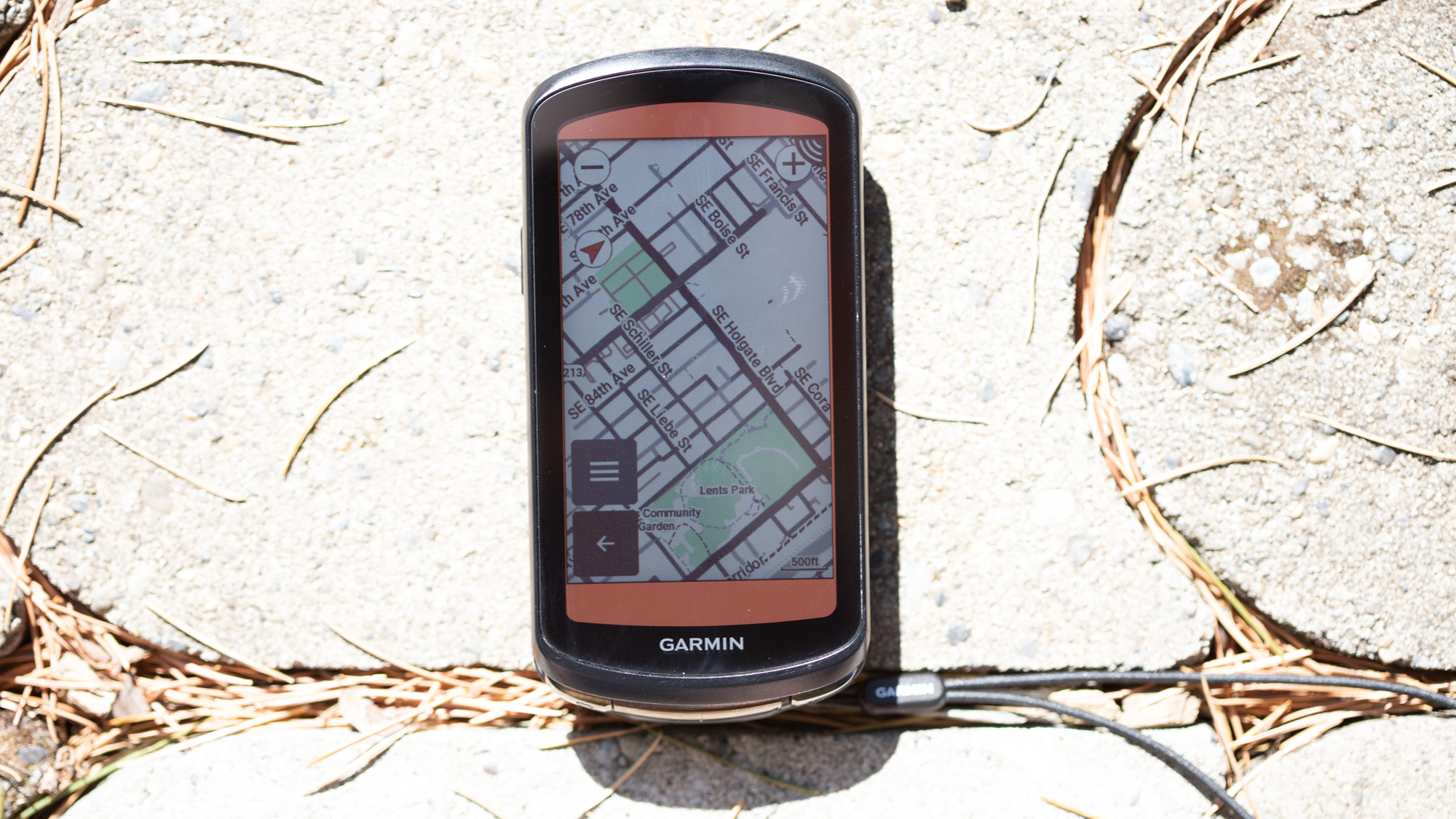
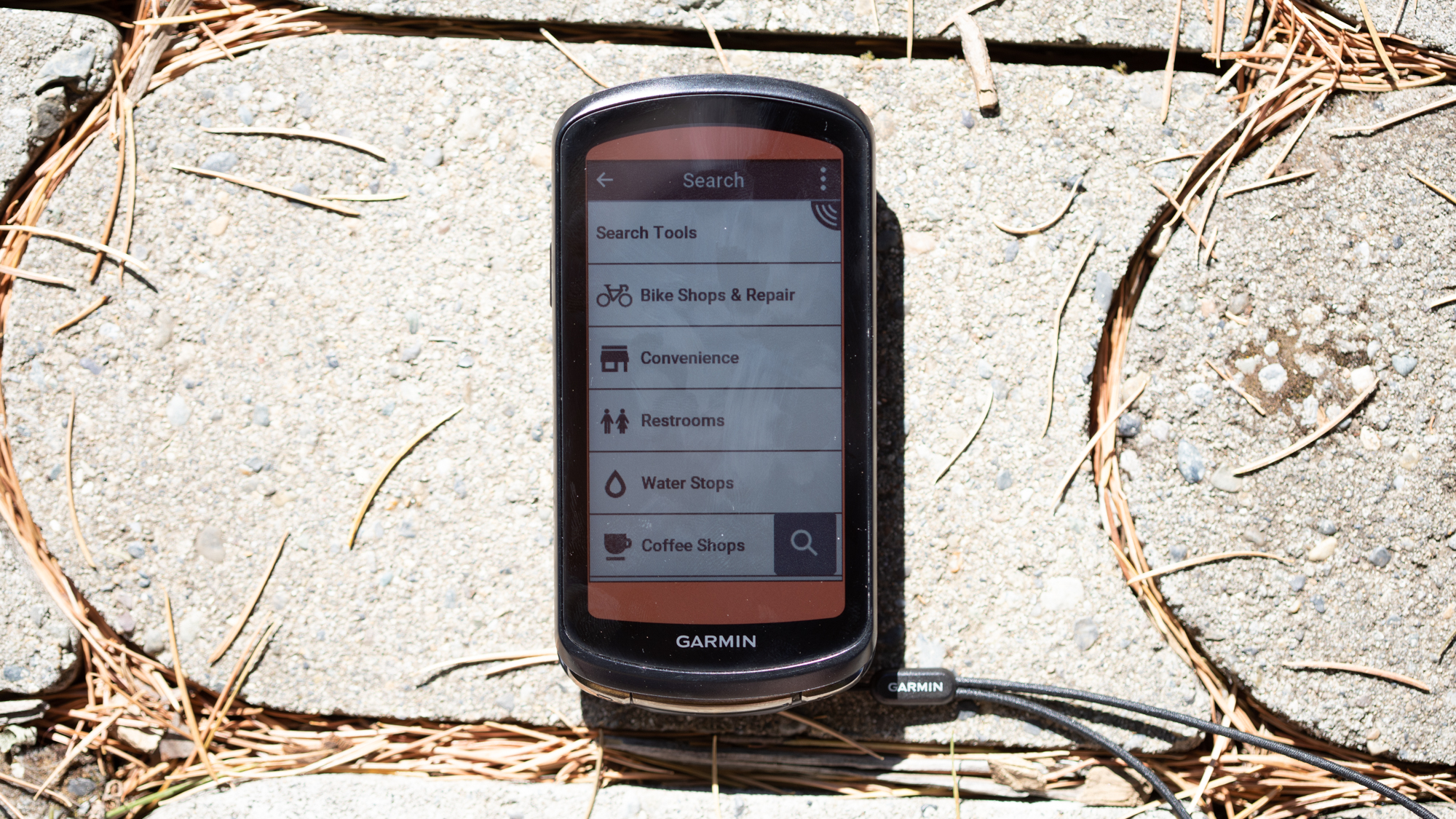

Connections: Like Wahoo and Hammerhead, there's extensive support for nearly any modern sensor that connects via ANT+ or Bluetooth. Heart rate sensors, power meters, current gear for electronic shifting systems, cadence, smart trainers, Shimano STEPS sensors, and radar units all work exactly as you'd expect. New to the Edge 1040 Solar are details about these sensors in the post-ride summary.
If you choose to connect to a smartphone you'll see notifications mid-ride and the mobile data connection will update your tracking link if you choose to share it. It's through Garmin Connect and a Bluetooth connection that you'll get courses sent to the device. The same connection will also upload rides and sync to all your connected services. The Edge 1040 Solar does also have WiFi and without a phone connection, the WiFi connection will handle the syncing.
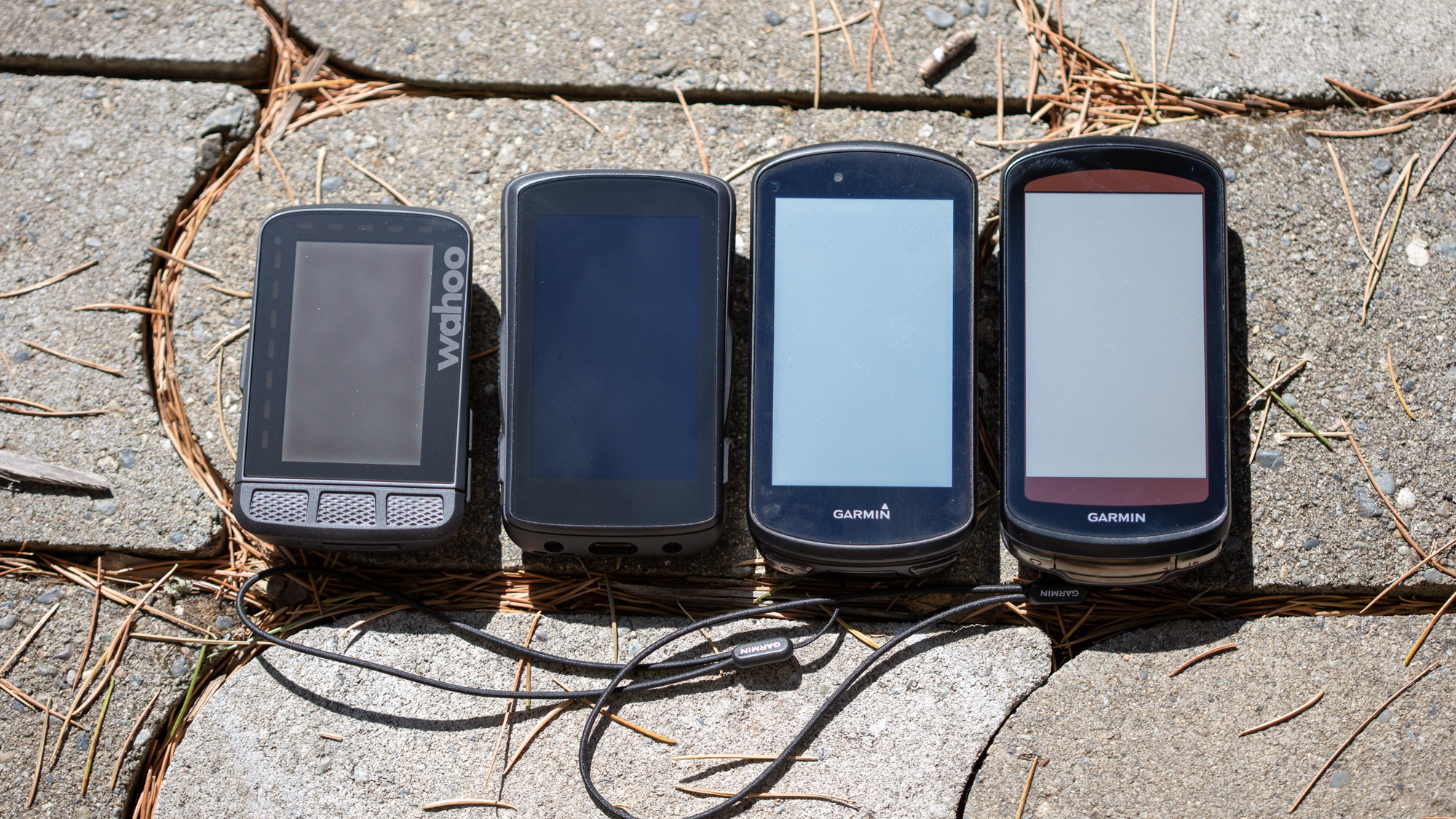
Verdict
In the intro of this review, I covered the fact that there is nothing like the Garmin Edge 1040 Solar on the market. There is no competing product and, in case I wasn't clear, it's very good and my bike computer of choice. If you want enough battery life to get through nearly any cycling adventure you can dream up, as well as a large colour screen, and some useful pacing features then the Garmin Edge 1040 Solar is the best option. It also happens to be very expensive and if that has you looking elsewhere, there are other options.
The closest competitor is the Edge 1030 Plus. If you've got that unit, there's little reason to upgrade and if you can score one second-hand or discounted, go for it. The Edge 830 and Edge 530 are almost exactly the same experience, but the extra money for the 830 gets you a touchscreen interface. You'll have to decide which of those is best for you but either way, the battery life is significantly less even though it’s still very good. If the battery life is okay for you but you really want the pacing help, check the Garmin Connect IQ store and see if there’s an add-on app that might work.
It's right here that one of my complaints about the 1040 Solar is relevant. There's no hardware-specific reason that the pacing and training features don't live in the Garmin Connect cloud and work with the full lineup of Garmin devices. That's a business decision and the whole ecosystem would benefit from a change. If you purchase a 1040 Solar you'll have all the software features and no issues but when the next version comes out you'll need to upgrade for added features, even if they are only software features.
If you think maybe you’d like to steer clear of that issue, there are other non-Garmin devices that will be worth cross-shopping as well. Wahoo is the biggest Garmin competitor at this point and their options are excellent. Both the Roam and Bolt have great battery life and work very well if you want something that just works. The downsides are that the screens are much smaller, they aren't touchscreen, their mapping isn’t in the same league, and they rely heavily on a smartphone.
For those who want better mapping, and a true colour touchscreen, the Hammerhead Karoo 2 is definitely worth a look. This is a very capable unit, but it is held back primarily by a battery life that struggles beyond around eight hours in normal use, and there's no waterproof way to charge it whilst riding. As long as the battery life will work for you then that’s an option to save some money compared to the Garmin Edge 1040 Solar.
Ultimately, to reiterate the point: the Garmin Edge 1040 Solar is the best, but you'll have to pay for it, and at this price, it's worth seriously considering what you actually need from your computer before you do.
| Attributes | Notes | Rating |
|---|---|---|
| Screen Quality | It’s a little darker because of the Solar and Garmin screens would benefit from a matte coating. It also pales in comparison to modern smartphone screens despite being a good match for other bike computers. | 8/10 |
| Navigation Quality | Almost perfect. Needs a simple way to navigate back to the start of a ride (when you are done) and an easy way to see how much distance is left in the ride. | 9/10 |
| Smart phone connection | Once again almost perfect. On an Android phone the notifications don’t all show the way they should. | 9/10 |
| Battery Life | It doesn’t get better than this currently. | 10/10 |
| Value | There’s no reasonable competitor and the price jumps from the Edge 130 to the Edge 1040 Solar all make sense. However, it’s still a very expensive bike computer. | 8/10 |
| Overall rating | Row 5 - Cell 1 | 88% |
Tech Specs: Garmin Edge 1040 Solar
- Price: £629.99 / $749.99 / €749.99 / $1,299.00 AUD
- Dimensions: 2.3" x 4.6" x 0.8" (59.3 x 117.6 x 20.0 mm)
- Display size: 3.5" (88.9 mm) diagonal
- Display Resolution: 282 x 470 pixels
- Weight: 133 g
- Battery Life: 45 hours (everything turned on and ideal solar charging) up to 180 hours (lowest power save mode and ideal solar charging)
- Water resistant rating: IPX7
- External memory storage: 64 GB internal memory only
- Max waypoints/favourites/locations: 200
- Max navigation routes: 100 courses
- History: up to 200 hours
- Sensors: GPS/Glonass/Galileo, Multi-Band GNSS, Barometer, Magnetometer, Gyroscope, Accelerometer, Ambient light sensor
Curious about improving your cycling stats? Our Garmin coupon codes can help you save on tech to guide your progress.
Josh hails from the Pacific Northwest of the United States but would prefer riding through the desert than the rain. He will happily talk for hours about the minutiae of cycling tech but also has an understanding that most people just want things to work. He is a road cyclist at heart and doesn't care much if those roads are paved, dirt, or digital. Although he rarely races, if you ask him to ride from sunrise to sunset the answer will be yes. Height: 5'9" Weight: 140 lb. Rides: Salsa Warbird, Cannondale CAAD9, Enve Melee, Look 795 Blade RS, Priority Continuum Onyx

